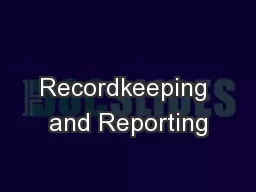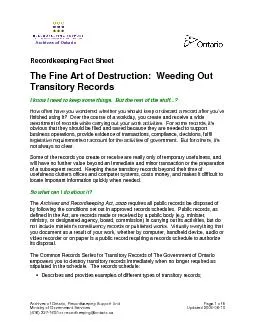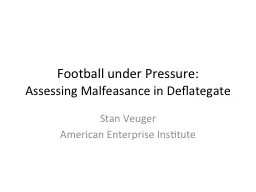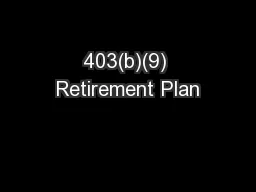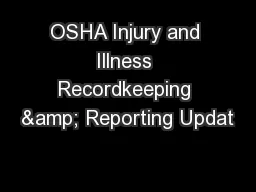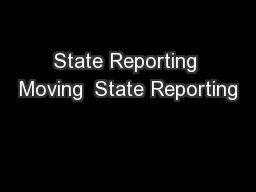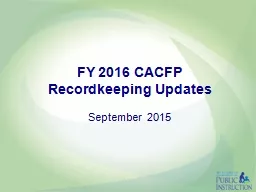PPT-Recordkeeping and Reporting
Author : pamella-moone | Published Date : 2018-09-17
29 CFR 1904 Objectives In this course we will discuss the following Who must comply with the standard Reporting requirements Criteria for recording Other issues
Presentation Embed Code
Download Presentation
Download Presentation The PPT/PDF document "Recordkeeping and Reporting" is the property of its rightful owner. Permission is granted to download and print the materials on this website for personal, non-commercial use only, and to display it on your personal computer provided you do not modify the materials and that you retain all copyright notices contained in the materials. By downloading content from our website, you accept the terms of this agreement.
Recordkeeping and Reporting: Transcript
Download Rules Of Document
"Recordkeeping and Reporting"The content belongs to its owner. You may download and print it for personal use, without modification, and keep all copyright notices. By downloading, you agree to these terms.
Related Documents

